CTU Civil War
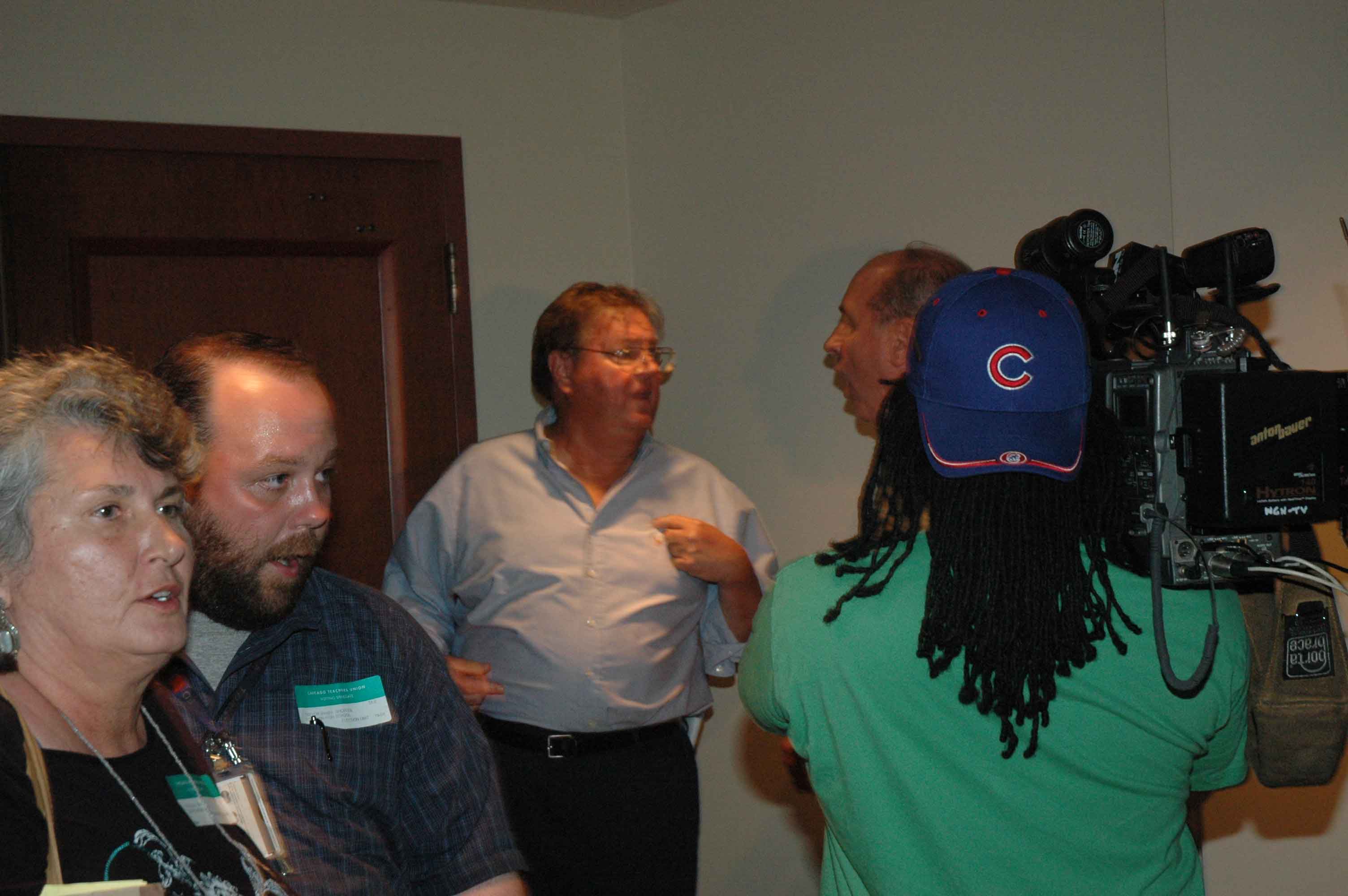 August 31, 2007. While TV cameras rolled, CTU attorney Lawrence Poltrock (center) argued with Roosevelt High School delegate Bill Malugen (partly obscured by camera) during the protests at Plumber’s Hall after the “vote” on the proposed contract brought in by Marilyn Stewart. Some observers at the time thought the two were about to come to blows. Poltrock’s law partner, his daughter Jennifer Poltrock, had served as “parliamentarian” at the raucous union meeting, which was convened on the Friday of Labor Day weekend to review Stewart’s contract proposal, and the big question before the city was whether the teachers were going to go on strike. By halfway through the meeting, the majority of the delegates were either skeptical about the Stewart proposal or opposed to it. Instead of allowing the delegates to ask questions and debate the contract for as long as necessary, Stewart claimed that the meeting had to clear the hall early. When the vote was finally called, Stewart called for the “Yes” votes. Then — despite an outcry from the delegates — she refused to call for the “No” votes and refused to heed calls for a count of the vote. At that point, Stewart simply ruled “The Ayes have it.” It was the first time in history that a vote of the House of Delegates on a CTU contract was not done by counting both the “Yes” and “No” votes. Jennifer Poltrock quickly claimed that Stewart didn’t have to count the “No” votes. Almost as quickly, Stewart disappeared. Stewart and the union officers went downstairs through a back door for a press conference. There, they tried to tell the media that the union delegates supported the contract, when in fact there had been no “No” votes allowed. Most of the delegates believed that had the “No” votes been taken, the contract would have been defeated. Stewart’s press conference was interrupted by chants of “No! No! No!” from hundreds of delegates who refused to leave the building. The delegates assembled outside the door of the press conference (doors behind Poltrock, above). The reporters who had been taking notes on what Marilyn Stewart was saying slowly left the room — despite attempts by CTU security to block the door — and covered the story among the mass of delegates chanting in opposition to the proposed contract. Substance photo by George N. SchmidtLess than six weeks before the Chicago Teachers Union threatened to place Chicago once again on the main stage of national politics as the crazy cousin of Democratic Party politics, CTU President Marilyn Stewart has virtually guaranteed an airing of the union’s considerable dirty laundry on the national stage.
August 31, 2007. While TV cameras rolled, CTU attorney Lawrence Poltrock (center) argued with Roosevelt High School delegate Bill Malugen (partly obscured by camera) during the protests at Plumber’s Hall after the “vote” on the proposed contract brought in by Marilyn Stewart. Some observers at the time thought the two were about to come to blows. Poltrock’s law partner, his daughter Jennifer Poltrock, had served as “parliamentarian” at the raucous union meeting, which was convened on the Friday of Labor Day weekend to review Stewart’s contract proposal, and the big question before the city was whether the teachers were going to go on strike. By halfway through the meeting, the majority of the delegates were either skeptical about the Stewart proposal or opposed to it. Instead of allowing the delegates to ask questions and debate the contract for as long as necessary, Stewart claimed that the meeting had to clear the hall early. When the vote was finally called, Stewart called for the “Yes” votes. Then — despite an outcry from the delegates — she refused to call for the “No” votes and refused to heed calls for a count of the vote. At that point, Stewart simply ruled “The Ayes have it.” It was the first time in history that a vote of the House of Delegates on a CTU contract was not done by counting both the “Yes” and “No” votes. Jennifer Poltrock quickly claimed that Stewart didn’t have to count the “No” votes. Almost as quickly, Stewart disappeared. Stewart and the union officers went downstairs through a back door for a press conference. There, they tried to tell the media that the union delegates supported the contract, when in fact there had been no “No” votes allowed. Most of the delegates believed that had the “No” votes been taken, the contract would have been defeated. Stewart’s press conference was interrupted by chants of “No! No! No!” from hundreds of delegates who refused to leave the building. The delegates assembled outside the door of the press conference (doors behind Poltrock, above). The reporters who had been taking notes on what Marilyn Stewart was saying slowly left the room — despite attempts by CTU security to block the door — and covered the story among the mass of delegates chanting in opposition to the proposed contract. Substance photo by George N. SchmidtLess than six weeks before the Chicago Teachers Union threatened to place Chicago once again on the main stage of national politics as the crazy cousin of Democratic Party politics, CTU President Marilyn Stewart has virtually guaranteed an airing of the union’s considerable dirty laundry on the national stage.
On May 28, 2008, the Chicago Teachers Union’s Executive Board met at the union offices to consider charges brought by two CTU members asking that Dallas be removed from office and stripped of union membership. No one in the union could remember when such charges have been brought against union members other than those who had scabbed during union strikes, but by the beginning of June, they were in the forefront of union work.
The May 28 Executive Board meeting was a special meeting. After the 112-page complaint against Dallas was provided to each of the more than 40 members of the Executive Board, the Executive Board voted by a reported vote of 39 to 4 to schedule a full hearing on the issues raised in the complain. The hearing was scheduled for June 12.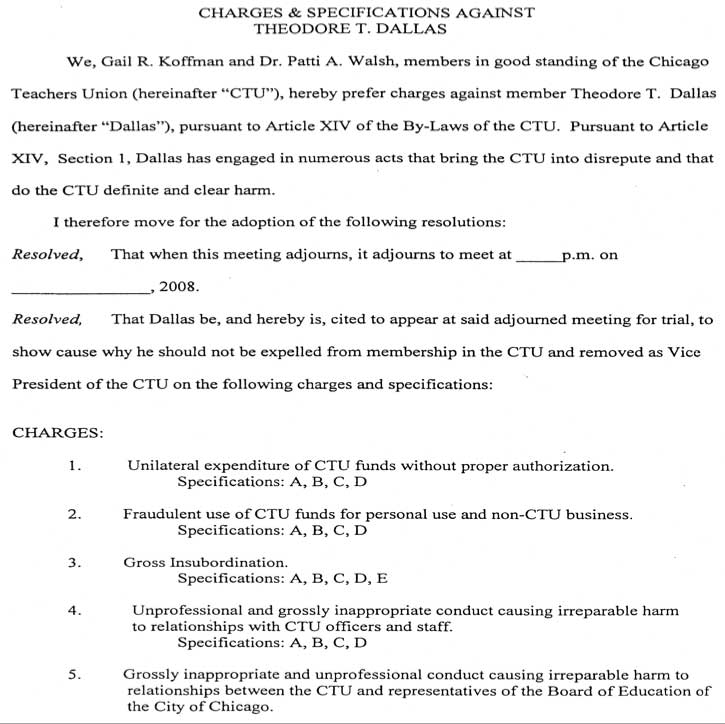 Above: The first page of the 112-page "Complaint" submitted by Gail Koffman and Patti Walsh to the Chicago Teachers Union Executive Board on May 28, 2008 against CTU Vice President Ted Dallas. The unprecedented attempt to remove an elected officer from office and strip him of union membership caused a major stir among union members. In a court case, attorneys for Ted Dallas successfully argued for a preliminary injunction barring the union from acting at a June 12 Executive Board meeting. Urged on by President Marilyn Stewart, however, a small number of union members continued to try and press their alleged case against Dallas. By early July, the issue was still tied up in court, while the Chicago Teachers Union, faced with a major budget crisis, had as many as four and five lawyers representing one faction of the union against Dallas.
Above: The first page of the 112-page "Complaint" submitted by Gail Koffman and Patti Walsh to the Chicago Teachers Union Executive Board on May 28, 2008 against CTU Vice President Ted Dallas. The unprecedented attempt to remove an elected officer from office and strip him of union membership caused a major stir among union members. In a court case, attorneys for Ted Dallas successfully argued for a preliminary injunction barring the union from acting at a June 12 Executive Board meeting. Urged on by President Marilyn Stewart, however, a small number of union members continued to try and press their alleged case against Dallas. By early July, the issue was still tied up in court, while the Chicago Teachers Union, faced with a major budget crisis, had as many as four and five lawyers representing one faction of the union against Dallas.
The 112-page complaint, a copy of which has been obtained by Substance and is available on the Substance Web site (www. substancenews. net), alleges that Dallas committed numerous acts which are in alleged violation of the CTU Constitution and By-Laws — and which allegedly “bring the union into disrepute.”
The trial of Ted Dallas will be held at the Chicago Teachers Union’s offices in the Merchandise Mart on Thursday, June 12, 2008, at 4:00 p.m. Several groups are urging as many union members as possible to attend.
The unprecedented charges mark the first time a union officer has been charged in such a manner, those familiar with the 70-year history of the Chicago Teachers Union have told Substance. Union records that might clarify the questions are either barred from Substance (for the present) or have been destroyed by the current administration.
During the past 40 years, the only people who have been brought up on charges under these provisions in the CTU Constitution and By-Laws have been those who crossed union picket lines during a union strike. Several members noted the irony of this: CTU President Marilyn Stewart hired an old friend, Traci Cobb-Evans, an identified strike breaker, to a $100,000-a-year union job three years ago. Cobb-Evans crossed the picket line during the most tense days of the 19-day strike in 1987. She is still working for the CTU in Springfield as one of the union’s two official representatives in the Illinois State Capitol.
Unprecedented access to internal union documents
The charges against Dallas were signed by Gail Koffman, a retired union staff member who now works as a consultant for the union, and Patti Walsh, whose current job is not indicated. Board of Education payroll records show that a “Patti Walsh” was working as a teacher at Richard J. Daley elementary school in September 2007, but no further indication of the identity of the “Patti Walsh” on the complaint has been made available. A “Patti Walsh” has been listed in previous editions of the CTU Delegates Directory as delegate from Daley elementary school. When reached by phone by Substance, Walsh confirmed that she had signed the complaint, but refused to explain how she had gotten access to the most private financial records stored at the CTU offices.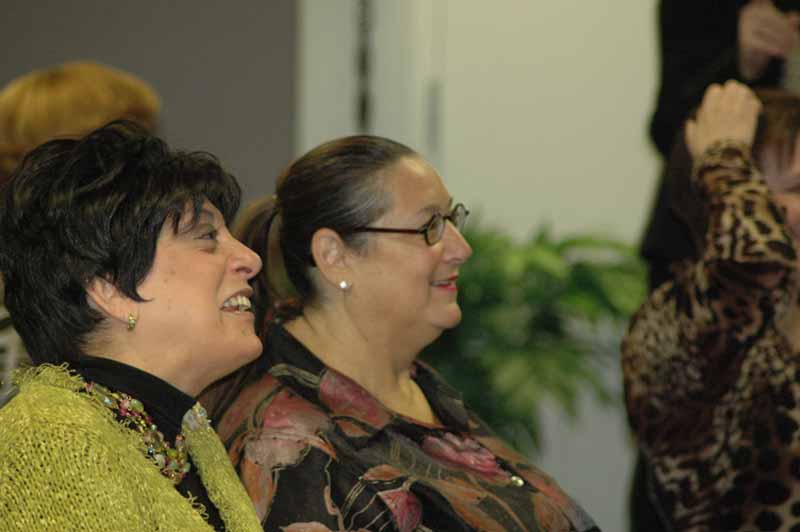 CTU Quest Center staff member Lynn Cherkasky-Davis (above) spied on Ted Dallas during a Saturday session for teachers applying for National Board Certification. Schmidt photo.
CTU Quest Center staff member Lynn Cherkasky-Davis (above) spied on Ted Dallas during a Saturday session for teachers applying for National Board Certification. Schmidt photo.
Koffman, Genova, Stewart refuse to talk with Substance
Gail Koffman refused to talk with Substance. Marilyn Stewart and CTU publicist Rosemaria Genova refused to answer questions posed by Substance.
In recent conversations, Genova has taken the position that she will only talk to reporters who are going to provide the CTU with favorable stories. Prior to May 14, Genova took the position that Stewart did not have to talk with this reporter because of a “pending litigation” against the union. That litigation ended at trial on May 14, 2008, and that fact was pointed out to Genova immediately afterwards. At the time the charges against Dallas were brought before the Executive Board, no one explained how the two people bringing the complaint had access to the most detailed and hitherto secret union financial records. For several months, during disputes over the union’s growing deficit and budget, CTU members and delegates have been told by Marilyn Stewart that even some of the most important union records (such as previous years’ contracts detailing the pay and benefits of the union’s five officers and eight “coordinators”) were none of the members’ business.
During the time her staff was apparently helping Koffman and Walsh gather extensive internal union documents, Stewart has been claiming that the members of the union and delegates to the House of Delegates are not entitled to even more general information. These have include the contracts of CTU officers and staff, expense records for the union’s officers and staff, and other key financial records.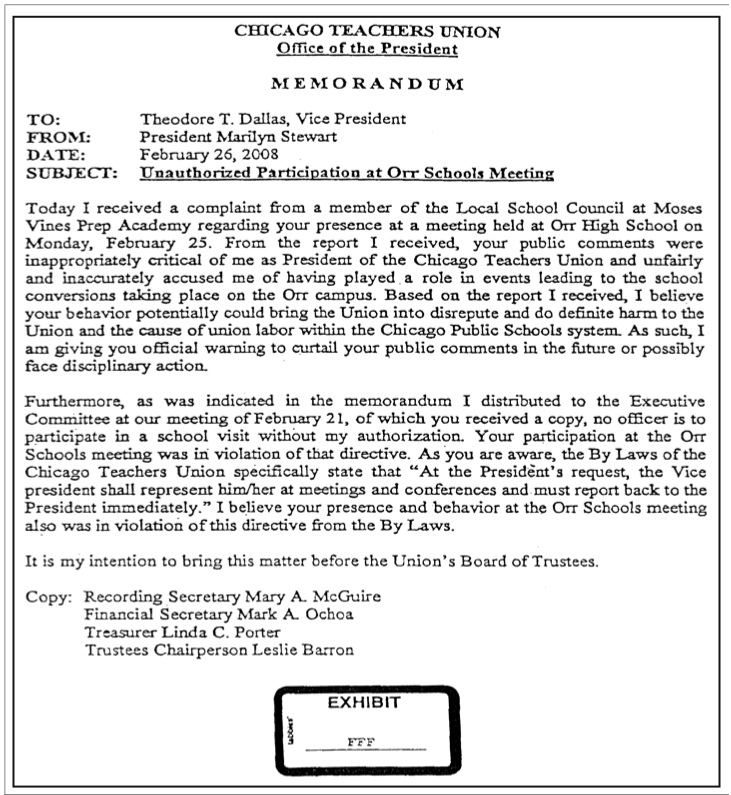
At the end of May 2008, CTU Recording Secretary Mary McGuire refused to allow one CTU member to read the contracts of the current officers at the union offices after she had announced that any member could schedule an appointment to do so. McGuire claimed that the contracts had been “thrown in the garbage” by Ted Dallas, and implied that the Chicago Teachers Union, which has one of the most expensive computer systems of any union local in the USA, did not have computer copies of the requested records.
How does the union control expenses by officers and staff?
The complaint signed by Koffman and Walsh includes more than 40 pages of photocopies of expense vouchers and receipts. Since July 2001, union staff have been allowed to receive reimbursement for reasonable expenses, provided that they attach original receipts. Prior to that time, under the administration of Tom Reece (1994-2001) union officers and staff were routinely paid “expenses” of $1,500 per month without having to produce any kind of proof to the union. By the time Dallas became Vice President, the reimbursement process that had been changed by President Deborah Lynch was in place and remained there.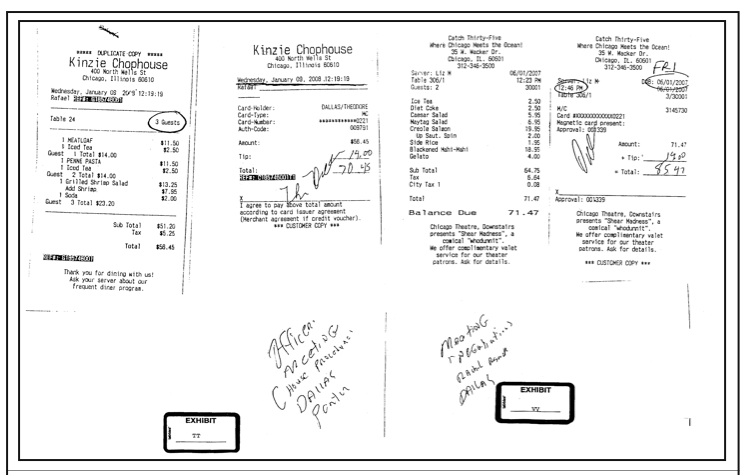
The “Koffman-Walsh Complaint” (which is what this article will refer to it as from this point on) alleges Dallas made illegal expense charges to the union in violation of union procedures. But the complaint does not indicate what those procedures were, how those procedures were applied to other union officers and staff, how those procedures were enforced, or how Koffman and Walsh were given access to the most intimate details of union spending.
[Full disclosure: During the time this reporter served as Director of School Security and Safety for the Chicago Teachers Union under Deborah Lynch, I routinely submitted the computer expense form every month and routinely attached original receipts for expenses, as required by union procedure. Every month, expenses were reviewed. At one point, I had to explain why I had spent $5.00 for a shoe shine on Wall Street in New York City. It was during a week I was attending meetings with the staff of the New York teachers union on school security and safety. Once the explanation was given — the United Federation of Teachers offices are between the World Trade Center site and Wall Street and the shoe shine stand was near the subway stop when I discovered my shoes were stained prior to what amounted to a “business formal” meeting — the expenses were cleared.
[The union’s auditors may have also reviewed expenses after I received a monthly check based on my report and receipts, but until I read the Koffman Walsh Complaint against Ted Dallas, I had never known the CTU to do such a careful review of any union spending going back more than two years. Since the union’s press office refuses to answer Substance questions, I have been unable to learn from the union how many other union staff have had their expenses reviewed going back two years. Nor has it been possible to determine how much additional money the union has recovered in the event that other staff members’ expenses were reviewed as carefully as those of Mr. Dallas — and then questioned after the fact].
Sick day payouts, a perk for staff?
The Koffman-Walsh Complaint also charges that Dallas authorized checks for accumulated sick days for at least two union staff, allegedly in violation of union procedures.
But it was a surprise to most readers and observers that such a policy existed. It had never been revealed to the union’s House of Delegates or membership by Marilyn Stewart prior to its being asserted — in the Koffman Walsh-Complaint — as an example of gross misconduct.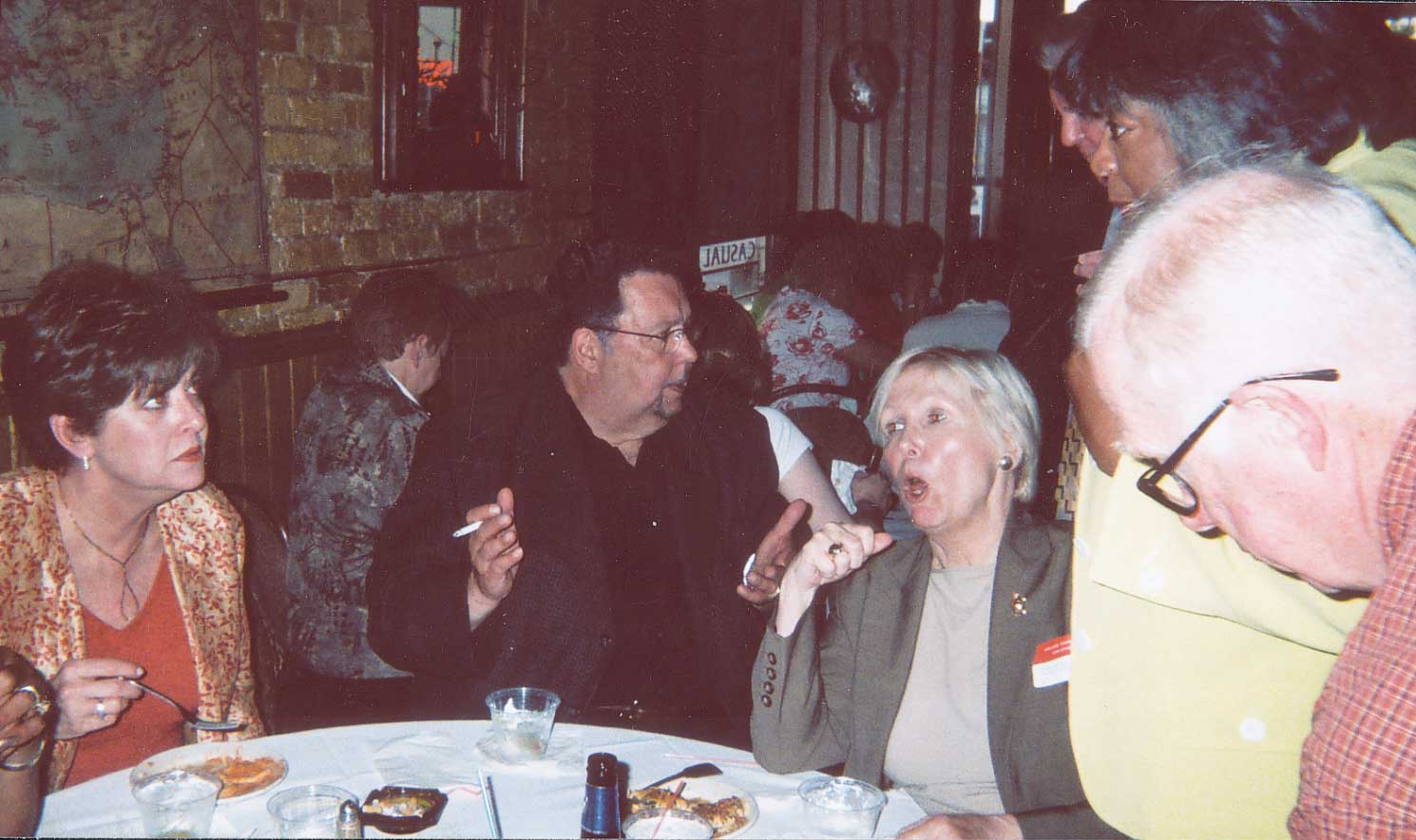 In her May report on the precarious financial situation of the Chicago Teachers Union, CTU President Marilyn Stewart (partly obscured, above right behind former CTU research chief Tom Feeley, far right) spared no blame in reviewing the history of the union.
In her May report on the precarious financial situation of the Chicago Teachers Union, CTU President Marilyn Stewart (partly obscured, above right behind former CTU research chief Tom Feeley, far right) spared no blame in reviewing the history of the union.
According to Stewart, her three predecessors (Jacqueline Vaughn, who died in 1994; Tom Reece (above, center), who served from 1994 to 2001; and Deborah Lynch, who served from 2001 until August 2004) were mainly to blame. According to Stewart, the three previous presidents of the CTU caused a deficit that required that the union borrow $3 million in the past seven months. In addition to blaming the venerated CTU President Jacqueline Vaughn (1984 - 1994), who died in 1994, Stewart also blamed Vaughn’s successor Tom Reece (above, second from left), and, of course, Deborah Lynch, whom she had blamed for just about everything during her first term in office.
Stewart’s version of reality is that Vaughn and Reece initiated "policies" that resulted in the long-term financial problems of the CTU, and that those policies were made worse under Stewart’s immediate predecessor, Lynch.
With Vaughn and Reece now deceased, some observers noted that Stewart was still able to get away with what was called the “Blame everything on Debbie” strategy. Stewart utilized that strategy between 2004 and her May 2007 re-election. Stewart has also blamed some of the people who put her into power from what is now being called “The Old UPC” (United Progressive Caucus). Current scapegoats include current Vice President Ted Dallas (not in photograph above), former coordinator Diana Sheffer (above, center), and Treasurer Linda Porter. Sheffer, who was one of the handful of people who kept the UPC together during the first years of the Lynch administration, was abruptly fired from her union job by Stewart in December 2007. Stewart had Sheffer escorted out of the CTU offices by security.
The only living president whom Stewart blames is Deborah Lynch, who served as CTU President from July 2001 through July 2004. Stewart was unwilling to take responsibility herself for the financial debacle that her administration has created since 2004. The only person in the photograph above who is still with Stewart is Legislative Coordinator Pam Massarsky (above far left), who reportedly negotiated the disastrous contract that Stewart forced through last August and September. Substance photograph by Theresa D. Daniels.
The procedures themselves are not outlined in the complaint. Most union members didn’t even know that union staff are allowed to “cash out” accumulated sick days prior to retirement. Regular teachers may accumulate sick days to cash in prior to retirement, and under the current union contract the maximum number is 320 over a career that can span more than 30 years. Regular teachers, however, cannot cash out their sick days until they retire. Apparently the union has provided this perk to its staff without informing the House of Delegates or the membership.
Another claim in the Koffman-Walsh Complaint is that Dallas had the union pay a bill of $5,000 from his “personal attorney.” Again, it is impossible to determine based on the materials provided whether the union routinely approved such expenses for Dallas or other union staff, and on what basis. No policy is cited, and Stewart refuses to talk to reporters about these matters.
“Insubordination” by an elected officer?
Some of the most curious allegations made in the Koffman-Walsh Complaint against Dallas charge him with “insubordination.” A number of documents — mostly internal union e-mails from “Marilyn Stewart” — order Dallas not to participate in school visits with union members without the approval of the union president. Nowhere in the documents does the complaint indicate what union policy states that an elected officer is barred from participating in contract enforcement meetings at schools, except when authorized to do so by the President. Although union officers have traditionally been elected as part of a slate, each officer holds office on the basis of having been elected as an individual. (Theoretically, the members can split their votes and elect a President from one slate, a Vice President from another slate, and the Recording Secretary from a third slate). 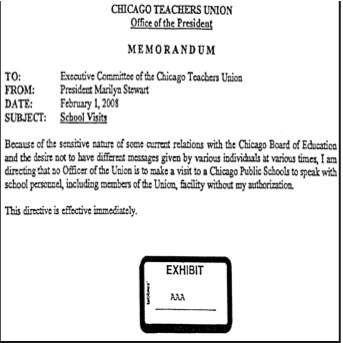 “Exhibit AAA” in the Koffman - Walsh Complaint (above) is Marilyn Stewart’s February 1, 2008, memo ordering the officers not to visit schools without her permission. Stewart then proceeded to avoid both the hearings on the school closings and most of the schools themselves. Although thousands of teachers, parents, students, and community leaders (including aldermen) turned out during the first three weeks of February 2008 in protest against the 19 proposed closings and reorganizations, the two largest unions representing those who would suffer the worst under the plans (the Chicago Teachers Union (CTU) — which represents the teachers and most PSRPs — and the Service Employees International Union (SEIU), Local 73 — which represents custodial workers and some categories of school aides) were conspicuous by their absence. This led most informed observers to conclude that the leaders of the CTU and SEIU had cut a deal with lawyers for Mayor Richard Daley to give Daley a green light to close and reorganize schools at will during the July and August 2007 negotiations.
“Exhibit AAA” in the Koffman - Walsh Complaint (above) is Marilyn Stewart’s February 1, 2008, memo ordering the officers not to visit schools without her permission. Stewart then proceeded to avoid both the hearings on the school closings and most of the schools themselves. Although thousands of teachers, parents, students, and community leaders (including aldermen) turned out during the first three weeks of February 2008 in protest against the 19 proposed closings and reorganizations, the two largest unions representing those who would suffer the worst under the plans (the Chicago Teachers Union (CTU) — which represents the teachers and most PSRPs — and the Service Employees International Union (SEIU), Local 73 — which represents custodial workers and some categories of school aides) were conspicuous by their absence. This led most informed observers to conclude that the leaders of the CTU and SEIU had cut a deal with lawyers for Mayor Richard Daley to give Daley a green light to close and reorganize schools at will during the July and August 2007 negotiations.
Ultimately, Marilyn Stewart (and her counterpart from SEIU) did not even attend the February 27, 2008, school board meeting when the Board voted unanimously and without debate to reconstitute six schools and fire all of the union members in those schools and to radically reorganize 12 other schools. Substance graphic from the CTU charges against Ted Dallas.
Prior to the publication of Koffman-Walsh Complaint, no one had asserted that the officers (as opposed to all other union staff) were in a corporate chain-of-command that made the President of the Union the “Chief Executive Officer” (CEO). In fact, the “CEO” designation has never been used in the Chicago Teachers Union until the current dispute between Dallas and Stewart over serious matters of union policy erupted this year. The dispute came following a December 26, 2007, letter from Marilyn Stewart to Chicago Public Schools CEO Arne Duncan (which she signed “In Solidarity”) stating that she was relieving Dallas of duties as liaison to the Board on certain union functions. Since the beginning of 2008, one of the biggest unresolved questions in the Chicago Teachers Union has been whether elected officers of the union (who are sworn as are elected delegates to uphold and defend the union’s members and uphold the union contract) can be ordered by other sworn officers not to meet with members and counsel members on their rights under the union contract and other labor law.
One document in the Koffman-Walsh Complaint even suggests that Stewart’s objective in trying to restrict Dallas’s activities in the schools is based on a Karl Rove-type attempt to get all union officers “on message.” This, from February 1, 2008, came at a time when the Chicago Board of Education was reorganizing, closing, or “reconstituting” 19 schools (ultimately, 18 schools) and members of the union from across the city were publicly protesting the changes. The Stewart memo seems to indicate that Stewart’s administration was supporting the Board’s actions, while Dallas was being “insubordinate” by opposing them.
With both sides beginning to marshal lawyers and cite fine points of law and policy, a beginning story on this explosive turn of events in Chicago unionism can only outline some of the content of the Koffman-Walsh Complaint and then pass along questions that have been raised by CTU members (including former officers and staff, active duty and retired) since May 28, 2008, when Marilyn Stewart took the unprecedented step of supporting the Koffman-Walsh Complaint against her own Vice President.
Did Marilyn Stewart order Ted Dallas and other union officers not to hold school meetings about proposed closings at schools under attack by Duncan, Board?
Since January 1, 2008, the members of the Chicago Teachers Union have been under an unprecedented attack by the Chicago Board of Education.
On January 23, 2008, parents from a number of Chicago public schools, including Edison Regional Gifted Center and Gladstone Elementary School, spoke at the regular monthly meeting of the Chicago Board of Education. The parents charged that the Board was preparing to close or radically change their schools, and that CPS officials had been preparing a secret plan to close or radically change dozens of other schools as well. The parents from Edison also stated that the plan was a “done deal” (to quote one of the Edison parents, referring to a remark allegedly made by Chief Education Officer Barbara Eason Watkins).
On January 23, Chicago Board of Education President Rufus Williams categorically denied that there was any “done deal” and implored the parents to participate in what he called “the process” that he said was going to unfold.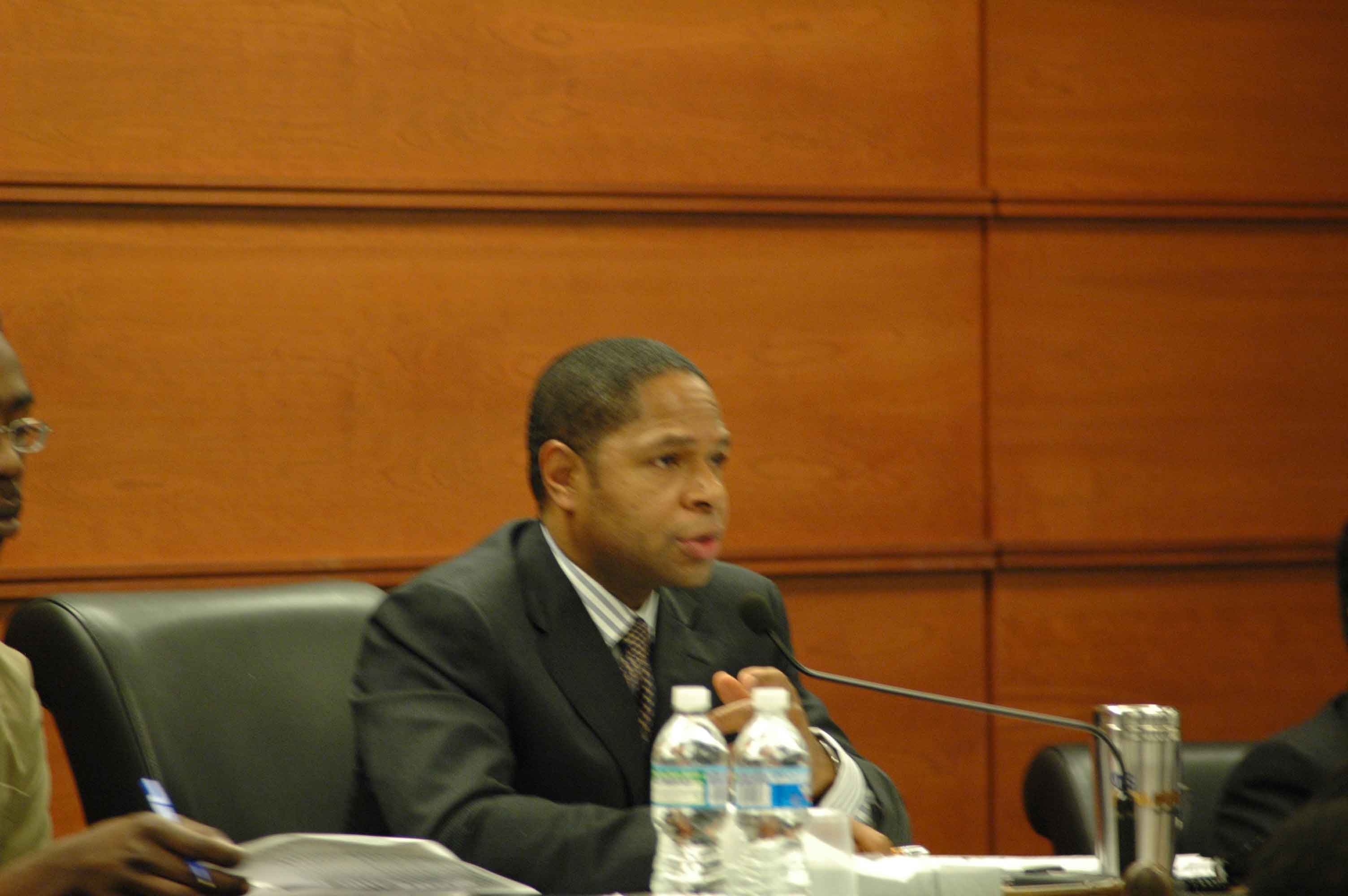 February 27, 2008. A short time before the Chicago Board of Education voted to reconstitute six public schools and fire all of their teachers (and other union staff), Chicago Teachers Union Recording Secretary, substituting for CTU President Marilyn Stewart, repeated the union’s request that the Board postpone the vote for 90 days to give the union the chance to work something out with CPS. When McGuire asked Board of Education President Rufus Williams “Will you give us the 90 days?” Williams answered “You know my answer.” McGuire leaned forward, and Williams said, “No.” “Thank you” was McGuire’s response to the “No” which would lead to the firing of 500 union members in June 2008. CTU President Marilyn Stewart avoided the hearings during February 2008 despite the desperate need of the union’s members for leadership and representation. Substance photo by George N. Schmidt.
February 27, 2008. A short time before the Chicago Board of Education voted to reconstitute six public schools and fire all of their teachers (and other union staff), Chicago Teachers Union Recording Secretary, substituting for CTU President Marilyn Stewart, repeated the union’s request that the Board postpone the vote for 90 days to give the union the chance to work something out with CPS. When McGuire asked Board of Education President Rufus Williams “Will you give us the 90 days?” Williams answered “You know my answer.” McGuire leaned forward, and Williams said, “No.” “Thank you” was McGuire’s response to the “No” which would lead to the firing of 500 union members in June 2008. CTU President Marilyn Stewart avoided the hearings during February 2008 despite the desperate need of the union’s members for leadership and representation. Substance photo by George N. Schmidt.
Although Rufus Williams denied the fact that any specific hit list of schools existed, by January 23, 2008, the Duncan administration was putting the finishing touches on a plan to close or radically change 19 Chicago public schools, the largest number at one time in history. Within two days after Williams’s denial (see “Done Deal,” April 2008 Substance), the names of 19 schools had been leaked to the press.
A week later, CPS announced more than 20 hearings regarding the fate of 19 schools on what was from then forward referred to at the “Hit List” Williams had just denied existed.
The proposals to be made by Arne Duncan included the closing of a number of schools. The schools to be closed were: Abbott Elementary; Carver Middle; DeLaCruz Elementary; Miles Davis Academy; Johns Elementary; Roque DeDuprey Elementary; Gladstone Elementary; and Midway Academy;).
The radical restructuring of other schools was also proposed. This included converting Irving Park Middle School into “Disney II” and converting Andersen Elementary School into “LaSalle II.”
Another major change was the moving of one entire school into another building six miles away (Edison Regional Gifted Center from the far Northwest Side Edison Park community to the Albany Park Middle School building in Albany Park.
By far the most serious of the changes being proposed was the “Turnarounding” (a term introduced by CEO Arne Duncan in December 2007 in what seemed to be a routine report to the Board of Education of six schools. Legally, the proposal for the six schools was changed to “Reconstitution” since there is no legal provision in Illinois law for the “turnarounding” of supposedly failing schools. The six schools Duncan proposed to be reconstituted were two high schools (Harper and Orr) and four elementary schools (Copernicus; Fulton; Howe; and Morton).
Massive opposition followed tall of the proposals.
Some hearings (Gladstone; Edison; DeLa Cruz; Andersen) drew hundreds of parents, students, teachers and community leaders (including aldermen) in opposition to the proposals. In virtually every case, the hearings that were held uncovered sloppy staff work on the part of the Duncan administration.
Duncan’s proposal to close the Edison Regional Gifted Center and move its students to Albany Park, for example, was supposed to relieve overcrowding on what Duncan called “The Northwest Side.” But the majority of the schools on the Northwest Side facing real overcrowding were not affected by the Edison closing. A much more efficient solution to relieving real overcrowding in those portions of the “Northwest Side” where it actually exists would have been to move the Academy for Urban School Leadership (AUSL) out of the old Wright College building at 3400 N. Austin. AUSL, which is run by, Martin Koldyke, a friend of Mayor Daley, had been given the Wright College building for its teacher training center, even though the adjacent schools were all overcrowded.
If AUSL were moved to the actual inner city (where, supposedly, the AUSL trainees are going to be teaching), then the Chicago Board of Education could utilize the Wright building to relieve overcrowding at more than a half dozen overcrowded elementary schools in the area.
Dramatic hearings, largely ignored by Chicago’s corporate media, were held throughout the month of February on the proposals to change the 19 schools. All the hearings were complete by February 22, one week before the February 27 school board meeting. Although the hearing officers had promised parents, teachers, students, and community leaders that their reports would be read by Arne Duncan and the members of the Chicago Board of Education, the complete reports were not even available to the seven members of the Board when they met and approved Duncan’s proposals on February 27, 2008. Substance attended most of the hearings and has reviewed more than 3,000 pages of records from the hearings so far. The Board of Education is still compiling the complete report form each of the schools.
When Substance asked the Board of Education’s Communications Department to interview each of the seven members of the Board on how their decision was made when they voted on the 18 proposals made by Arne Duncan to impact the 18 schools on February 27 (Duncan withdrew the proposal on Abbott school, reducing the original list of 19 to 18), Board spokesman Malon Edwards eventually told Substance, in an email, “The members of the Board do not have time to do interviews.”
Did Stewart have a “Done Deal” on the school reorganizations and closings? Conspicuously absent from the hearings in February 2008 was Marilyn Stewart, President of the 31,000-member Chicago Teachers Union.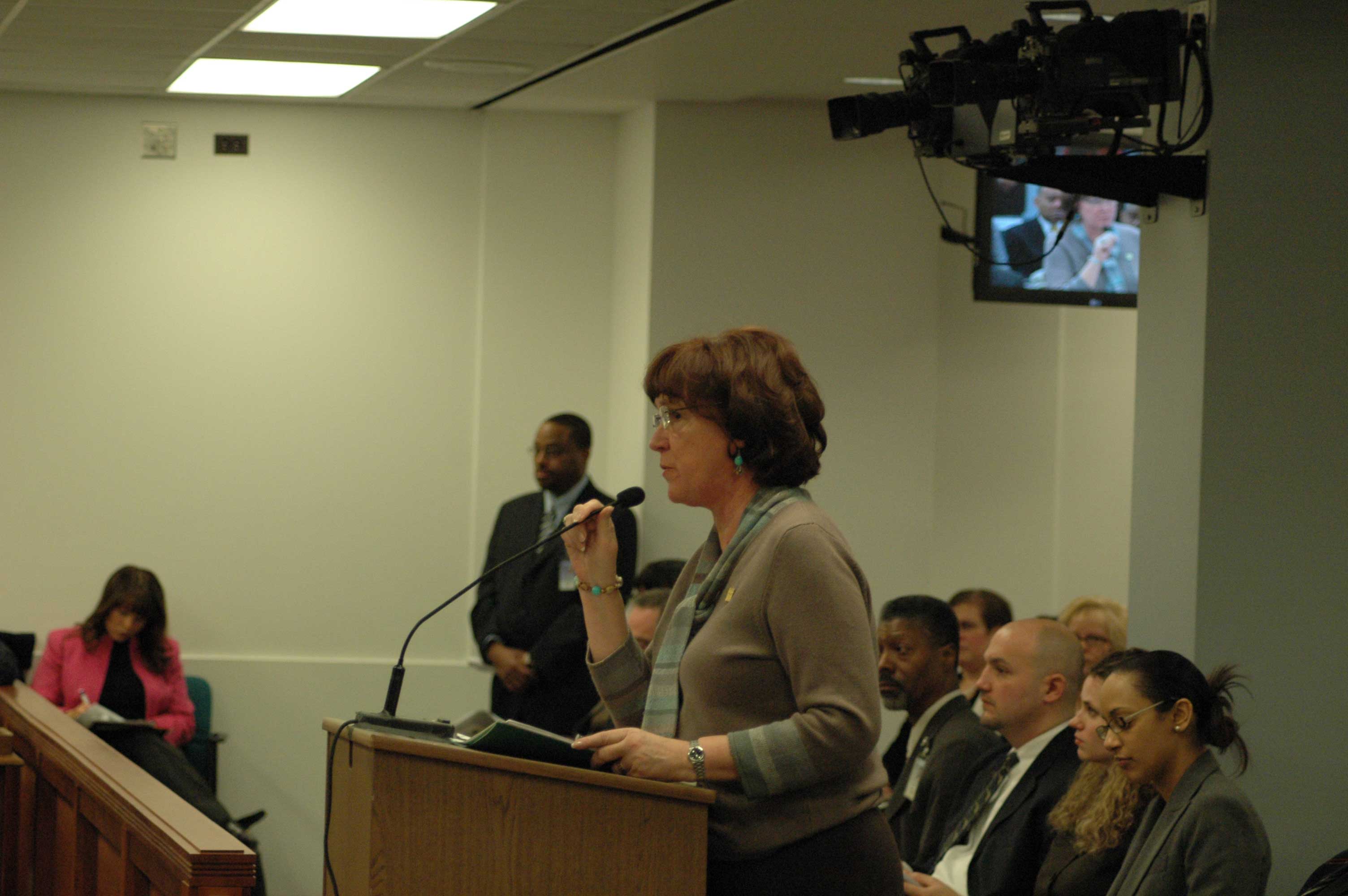 Marilyn Stewart did not attend the February 27, 2008, meeting of the Chicago Board of Education, and by that time she had ordered the union's vice president Ted Dallas not to represent the union at any functions with the Chicago Board of Education. On February 27, it was clear that the Board was going to vote to "reconstitute" six Chicago schools (although CPS was calling the process "turnaround" — a corporate term. CTU Recording Secretary Mary McGuire (above) did not even criticize the Board's cynical approach to the hearings that had been held during the previous three weeks. Instead, she simply asked the Board to postpone the vote for three months, and when Board President Rufus Williams said "No" to her request, McGuire's response was "Thank You." Between Stewart's absence and McGuire's acceptance of the Board's actions, hundreds of teachers and other union members were fated to lose their jobs at the end of the 2007-2008 school year. Substance photo by George N. Schmidt.
Marilyn Stewart did not attend the February 27, 2008, meeting of the Chicago Board of Education, and by that time she had ordered the union's vice president Ted Dallas not to represent the union at any functions with the Chicago Board of Education. On February 27, it was clear that the Board was going to vote to "reconstitute" six Chicago schools (although CPS was calling the process "turnaround" — a corporate term. CTU Recording Secretary Mary McGuire (above) did not even criticize the Board's cynical approach to the hearings that had been held during the previous three weeks. Instead, she simply asked the Board to postpone the vote for three months, and when Board President Rufus Williams said "No" to her request, McGuire's response was "Thank You." Between Stewart's absence and McGuire's acceptance of the Board's actions, hundreds of teachers and other union members were fated to lose their jobs at the end of the 2007-2008 school year. Substance photo by George N. Schmidt.
Although the union sent representatives to most of the hearings, Stewart herself did not speak at any of them, and now, thanks to the Koffman-Walsh Complaint, it has now been learned that Stewart ordered her Vice President, Ted Dallas, and the other officers not to attend the hearings without her permission. This was confirmed by Substance during the hearings. CTU Recording Secretary Mary McGuire, for example, was observed at the tumultuous Edison hearings but did not speak. CTU Financial Secretary Mark Ochoa gave a simplistic boiler plate speech at several hearings, including Roque DeDuprey and Andersen, but left members of the audience puzzled at what he meant the union position to be.
And at the Andersen hearing and others, Ted Dallas appeared an spoke, but made it clear to reporters and some members of the audience that he was not stating the union’s “official” position. The puzzle remained until the filing of the Koffman-Walsh Complaint.
The complaint contains a number of internal CTU documents which, in the context of the massive attack on the union’s members, become shocking.
On February 1, 2008, a few days before the whirlwind three weeks of hearings on the closings began, Stewart issued a memo ordering the members of the CTU Executive Committee (the union’s five officers and the head of the Trustees) not to attend school meetings without her authorization.
“Because of the sensitive nature of some current relations with the Chicago Board of Education,” Stewart’s memo stated, “and the desire not to have different messages given by various individuals at various times, I am directing that no Officer of the Union is to make a visit to a Chicago Public Schools [sic] to speak with school personnel, including members of the Union, facility [sic] without my authorization…”
Stewart has refused repeated requests from Substance for interviews regarding what she means by the “sensitive nature of some current relations with the Chicago Board of Education” in the now public February 1 memo, which is reproduced [above] on this page.
The February 26 memo. Did Marilyn Stewart covertly support the ‘Reconstitution’ of six schools and the firing of all their staffs and then try to cover up the deal she had made by ordering her staff not to attend the hearings or organize union members against the reconstitution?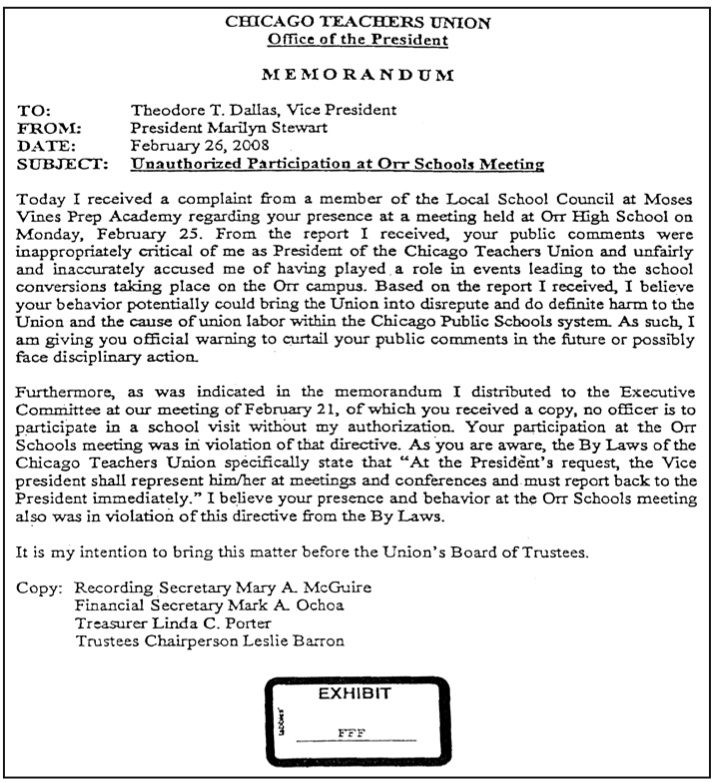 Above: “Exhibit FFF” in the Koffman - Walsh Complaint is a memo that Marilyn Stewart send to CTU Vice President Ted Dallas officially warning him to curtail his public comments and not to hold “unauthorized” school meetings with union members. The day after the memo was issued, the Board of Education voted to reconstitute Orr High School and fire all of its staff. Orr was one of six schools reconstituted (under the guise of something called "turnaround") where the union leadership — with the exception of Dallas — did nothing. Marilyn Stewart not only failed to attend the meeting she accuses Ted Dallas of holding at Orr (which could “bring the Union into disrepute...”), but she also avoided the Board of Education meeting (February 27, 2008) when the destruction of Orr was approved.
Above: “Exhibit FFF” in the Koffman - Walsh Complaint is a memo that Marilyn Stewart send to CTU Vice President Ted Dallas officially warning him to curtail his public comments and not to hold “unauthorized” school meetings with union members. The day after the memo was issued, the Board of Education voted to reconstitute Orr High School and fire all of its staff. Orr was one of six schools reconstituted (under the guise of something called "turnaround") where the union leadership — with the exception of Dallas — did nothing. Marilyn Stewart not only failed to attend the meeting she accuses Ted Dallas of holding at Orr (which could “bring the Union into disrepute...”), but she also avoided the Board of Education meeting (February 27, 2008) when the destruction of Orr was approved.
On February 7, 2008, the Chicago Board of Education convened a hearing at which it made clear that the Board intended to “reconstitute” Orr High School. After all the smoke and mirrors of “Turnarounding” had been cleared away, at each of the hearings on the six schools targeted, the Board of Education’s Chief Office of Research, Evaluation, and Accountability, former Illinois State Board of Education official Ginger Reynolds, stated that the Board was going to reconstitute the six schools. The same boilerplate legal statements were made during the Orr hearings and during other hearings for the five other schools: Harper High School; Copernicus, Fulton, Howe, and Morton elementary schools.
More than eight years ago, the Chicago Board of Education had previously admitted that “Reconstitution” had failed in Chicago in 1997. Extensive research has shown that “Reconstitution” has failed everywhere in the USA. Chicago Schools CEO Arne Duncan claimed that a new kind of Reconstitution — which he calls “Turnaround” — will be different. Duncan has refused numerous times to be interviewed by Substance about this new form of reconstitution. Claims that the Academy for Urban School Leadership (AUSL), one of the two entities being hired by CPS (at a cost of more than $1 million) to manage the reconstitution, have so far been more marketing than educational praxis. There is nothing to suggest that Reconstitution renamed “Turnaround” according to some trendy corporate jargon is any better than the old reconstitution.
Did the President of the Chicago Teachers Union know before February 2008 that Duncan was going to fire more than 500 union members at six schools, based on programs and policies that had already failed not only in Chicago but across the USA? If Marilyn Stewart was defending her members at the schools facing reconstitution, she kept it a secret. Not only did Stewart avoid the hearings and the Board of Education meeting at which reconstitution was approved, but she seemed to be going out of her way to put the union’s weight on the side of the Board of Education. By ordering her officers and staff not to meet with the teachers at the schools facing reconstitution — while failing to appear at the hearings herself — Stewart certainly led more and more union members to the conclusion that the "Done Deal" had included her.
Stewart’s February 25 media event and Mary McGuire’s “Thank You” when the union was told that 500 union members were being fired
On February 25, 2008, the agenda for the February 27 meeting of the Chicago Board of Education became public, and on that agenda was the recommendation by Duncan that Orr High School be subjected to “Turnaround” (legally, Reconstitution). On that same day, February 25, 2008, Stewart hosted a media event at the union’s Merchandise Mart headquarters.
Present at the media event were Stewart and two other officers: Financial Secretary Mark Ochoa and Recording Secretary Mary McGuire. 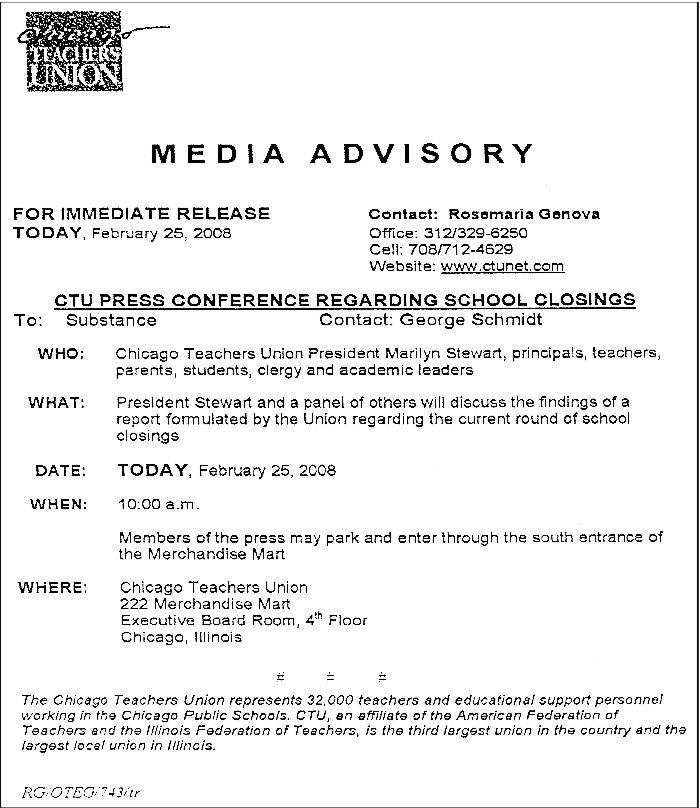 At the CTU press conference two days before the Board of Education met, the Marilyn Stewart introduced speakers who explained how the union could do a better job getting rid of “bad teachers.” The “ministers” Stewart promised the media went instead to a last-minute meeting with schools CEO Arne Duncan.
At the CTU press conference two days before the Board of Education met, the Marilyn Stewart introduced speakers who explained how the union could do a better job getting rid of “bad teachers.” The “ministers” Stewart promised the media went instead to a last-minute meeting with schools CEO Arne Duncan.
At the press conference, Stewart announced that she had requested that the Board postpone its February 27 vote for 90 days so that the union could provide input as to how best to reorganize the schools that were on the upcoming agenda. Several speakers at the press conference, most notably Dal Lawrence, retired President of the Toledo (Ohio) Federation of Teachers, said that the union had a better program for eliminating poor teachers. Stewart’s request for the 90 days was ignored by the Board.
At the February 27 Board meeting, Stewart sent Mary McGuire, who spoke, ending her remarks by asking Rufus Williams, Board President, whether the Board would postpone the vote for 90 days. “You know my answer,” Williams said. “No.”
“Thank you,” was McGuire’s reply.
What the members of the union did not know until May was that during the week when Marilyn Stewart was asking to Board to let her be a partner in firing teachers, she was also threatening Ted Dallas for meeting with the teachers at one of the schools being threatened. In a February 26 memo, dated the day before the Board voted to Reconstitute Orr (and fire its entire staff), Stewart threatened to discipline Dallas for meeting with the Orr teachers and staff! Stewart’s February 26 memo is published with this article.
Is Marilyn Stewart’s Quest Center promoting Fresh Start as a way to join CPS in firing teachers?
On February 25, 2008, two days before the Chicago Board of Education met and voted to go through with 18 of the 19 proposals on its agenda (the closing of Abbott Elementary School was removed from the agenda at the last minute by Arne Duncan), the Chicago Teachers Union held a press conference at its headquarters.
As reported above, the press conference was a strange thing for a union to be doing. Two of the speakers at the press conference (Dal Lawrence of the AFT and Wardella Johnson-Brookins, Principal of Fulton Elementary School) explicitly talked about how to get rid of “bad teachers.”
AFT consultant Dal Lawrence said that as President of the Toledo Federation of Teachers, he had been foremost in the nation in a union-backed collaborative effort to eliminate poor teachers through peer review and other processes.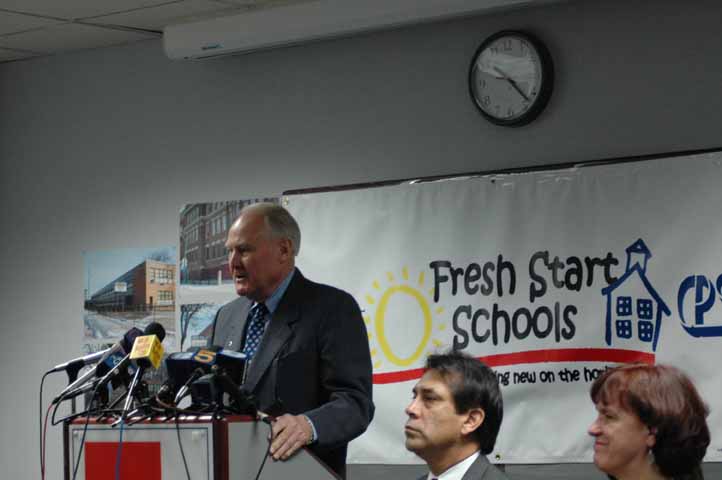 By February 25, 2008, members of the Chicago Teachers Union were only beginning to realize that the "Fresh Start" program promoted by the leaders of the Chicago Teachers Union was a plan to make the union a junior partner with the Chicago Board of Education in the firing of tenured teachers. At a February 25, 2008, press conference at CTU headquarters, Marilyn Stewart excluded two of the union's five officers (Vice President Ted Dallas and Treasurer Linda Porter), while featuring Financial Secretary Mark Ochoa (above, center) and Recording Secretary Mary McGuire (above, right) prominently for the TV cameras. McGuire is smiling (above) while retired Toledo Federation of Teachers President Dal Lawrence (above, left, at podium) tells reporters that as a union leader he (Lawrence) had helped fire more teachers than any schools superintendent in the state of Ohio. Lawrence proudly helped CTU President Marilyn Stewart promote the corporate-funded "Fresh Start" program against the members of the Chicago Teachers Union. Substance photo by George N. Schmidt.
By February 25, 2008, members of the Chicago Teachers Union were only beginning to realize that the "Fresh Start" program promoted by the leaders of the Chicago Teachers Union was a plan to make the union a junior partner with the Chicago Board of Education in the firing of tenured teachers. At a February 25, 2008, press conference at CTU headquarters, Marilyn Stewart excluded two of the union's five officers (Vice President Ted Dallas and Treasurer Linda Porter), while featuring Financial Secretary Mark Ochoa (above, center) and Recording Secretary Mary McGuire (above, right) prominently for the TV cameras. McGuire is smiling (above) while retired Toledo Federation of Teachers President Dal Lawrence (above, left, at podium) tells reporters that as a union leader he (Lawrence) had helped fire more teachers than any schools superintendent in the state of Ohio. Lawrence proudly helped CTU President Marilyn Stewart promote the corporate-funded "Fresh Start" program against the members of the Chicago Teachers Union. Substance photo by George N. Schmidt.
Fulton school principal Wardella Johnson - Brookins had stated repeatedly that Fulton should not be on the closing list because the school was making progress and, besides, she had already “reconstituted” the school herself by getting rid of “bad teachers.” During the various discussions of Fulton, she bragged that she had eliminated either 60 percent or 80 percent of the teachers who had been at Fulton when she had arrived there two years earlier.
The focus of much of the discussion was on the theory that “bad teachers” were the source of the problem, and that eliminating “bad teachers” was a legitimate activity, one that the union should participate in.
The longest document distributed at the February 25 CTU press conference was a paper authored by Marc Wigler, who currently heads the CTU Quest Center’s “Fresh Start Schools” program. One of the things that critics of “Fresh Start” had long raised was that the program seemed like it was aimed at helping principals get rid of “bad teachers.”
The question was open and the answer unclear on February 25.
On February 27, the Board of Education decided to ignore the union’s offer to help and voted, among other things, to reconstitute Orr, Harper, Howe, Copernicus, Fulton and Morton.
A question remained, however. Had the Chicago Teachers Union somehow agreed to a process whereby the union became a partner in the termination of tenured teachers with CPS?
The answer seems to be in the Koffman - Walsh Complaint.
The Quest Center is a corporate funded part of the Chicago Teachers Union, supposedly promoting “school reform.” One of the main activities of the Quest Center has been providing coaching for teachers seeking National Board Certification. Another activity, however, has been working on the “Fresh Start Schools.”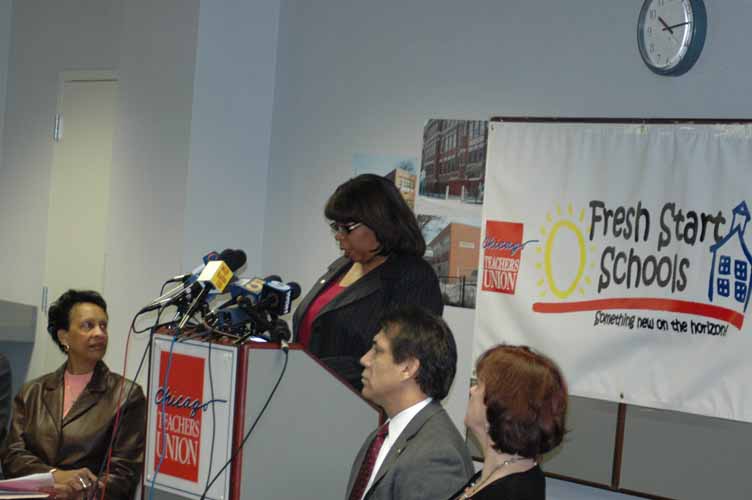 February 25, 2008. By the time Marilyn Stewart (above, at microphone) convened her media event at the CTU offices two days before the February Board of Education meeting, she had ordered the union’s Vice President (Ted Dallas) and Treasurer (Linda Porter) to remain away from the TV cameras. The only officers who have appeared with Marilyn Stewart since February 2008 have been Financial Secretary Mark Ochoa (center above) and Recording Secretary Mary McGuire (right, above). At the February 25 event, Stewart tried to claim that “Fresh Start” would do the same job the Board was about to do with reconstitution. Two days later, the Board ignored her and voted to reconstitute the largest number of schools in the history of Chicago. Substance photo by George N. Schmidt.
February 25, 2008. By the time Marilyn Stewart (above, at microphone) convened her media event at the CTU offices two days before the February Board of Education meeting, she had ordered the union’s Vice President (Ted Dallas) and Treasurer (Linda Porter) to remain away from the TV cameras. The only officers who have appeared with Marilyn Stewart since February 2008 have been Financial Secretary Mark Ochoa (center above) and Recording Secretary Mary McGuire (right, above). At the February 25 event, Stewart tried to claim that “Fresh Start” would do the same job the Board was about to do with reconstitution. Two days later, the Board ignored her and voted to reconstitute the largest number of schools in the history of Chicago. Substance photo by George N. Schmidt.
One of the Fresh Start Schools is Wells High School, where Ted Dallas had served as CTU Delegate prior to his 2004 election as Vice President of the union. Dallas’s roots at Wells were deep, his friendships significant, and his service as delegate to Wells clear. Even when Deborah Lynch was at her most popular, Dallas had been such an effective delegate that he had been re-elected delegate with more than 80 percent of the local vote in a head-to-head contest with a teacher supported by Deborah Lynch.
One of the most recent memos in the Koffman - Walsh Complaint is dated May 15, 2008.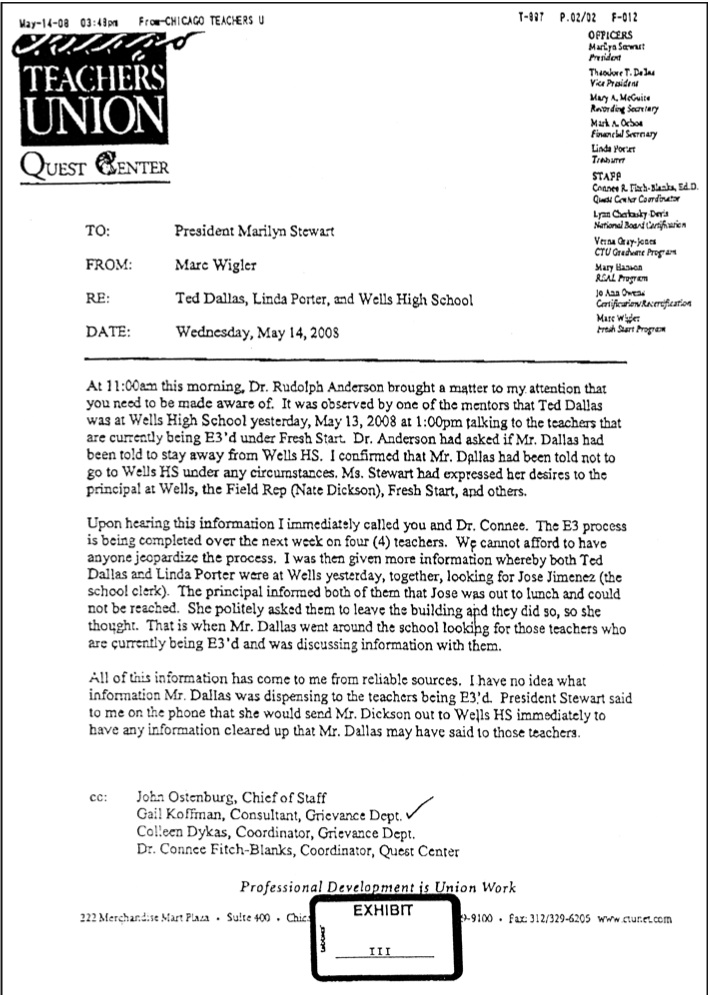 Marilyn Stewart continued to demand that Vice President Ted Dallas stay away from the schools and not help members. On May 14 (above) Fresh Start head Marc Wigler informed Stewart that Dallas had been trying to help teachers at Wells High School who were facing termination. Wigler and the Fresh Start program were working with the school’s principal to help terminate the teachers.
Marilyn Stewart continued to demand that Vice President Ted Dallas stay away from the schools and not help members. On May 14 (above) Fresh Start head Marc Wigler informed Stewart that Dallas had been trying to help teachers at Wells High School who were facing termination. Wigler and the Fresh Start program were working with the school’s principal to help terminate the teachers.
Apparently, Ted Dallas, as Vice President of the Chicago Teachers Union, visited his former school because the principal of that school is trying to fire some teachers. What Dallas actually did during the visit to Wells High School is not stated in the memo, since the entire document, initiated by Frest Start chief Marc Wigler, deals with the fact that Dallas has somehow violated a procedure that has, like most of the other offenses itemized in the Koffman - Walsh Complaint, been taken out of many contexts. Not the least of these contexts is the duty, traditional within the union movement in general and in the 70 year history of the Chicago Teachers Union, that union staff and officers defend the union’s members. And the most active defense members need is when their very professional careers are being threatened. Whether the threats come in the context of wholesale firings of entire schools’ staffs by another round of “reconstitutions” in Chicago (now called, in the corporate jargon of the New Age, “Turnaround”) or in the case of individuals who are being harassed and threatened at particular schools.
In the May 15, 2008 memo, Marc Wigler, a highly paid member of the staff of the Chicago Teachers Union, complains to Marilyn Stewart, the President of the largest labor union in Illinoi, that Ted Dallas, the Vice President of the largest union in Illinois, had visited Wells High School and was “interfering” with the “E-3 process”. The “E-3 process” referred to is designed to terminate teachers.
The interference which Wigler apparently accuses Dallas of was apparently attempting to help teachers who were threatened with firing. One of the things that angered the teachers at Orr — and at the other schools facing reconstitution — was that students, parents and community organizations joined them in opposing the reconstitutions. But the leaders of the Chicago Teachers Union (with the exception of the vice president) were nowhere to be seen on February 27 when the Board voted to destroy their careers.
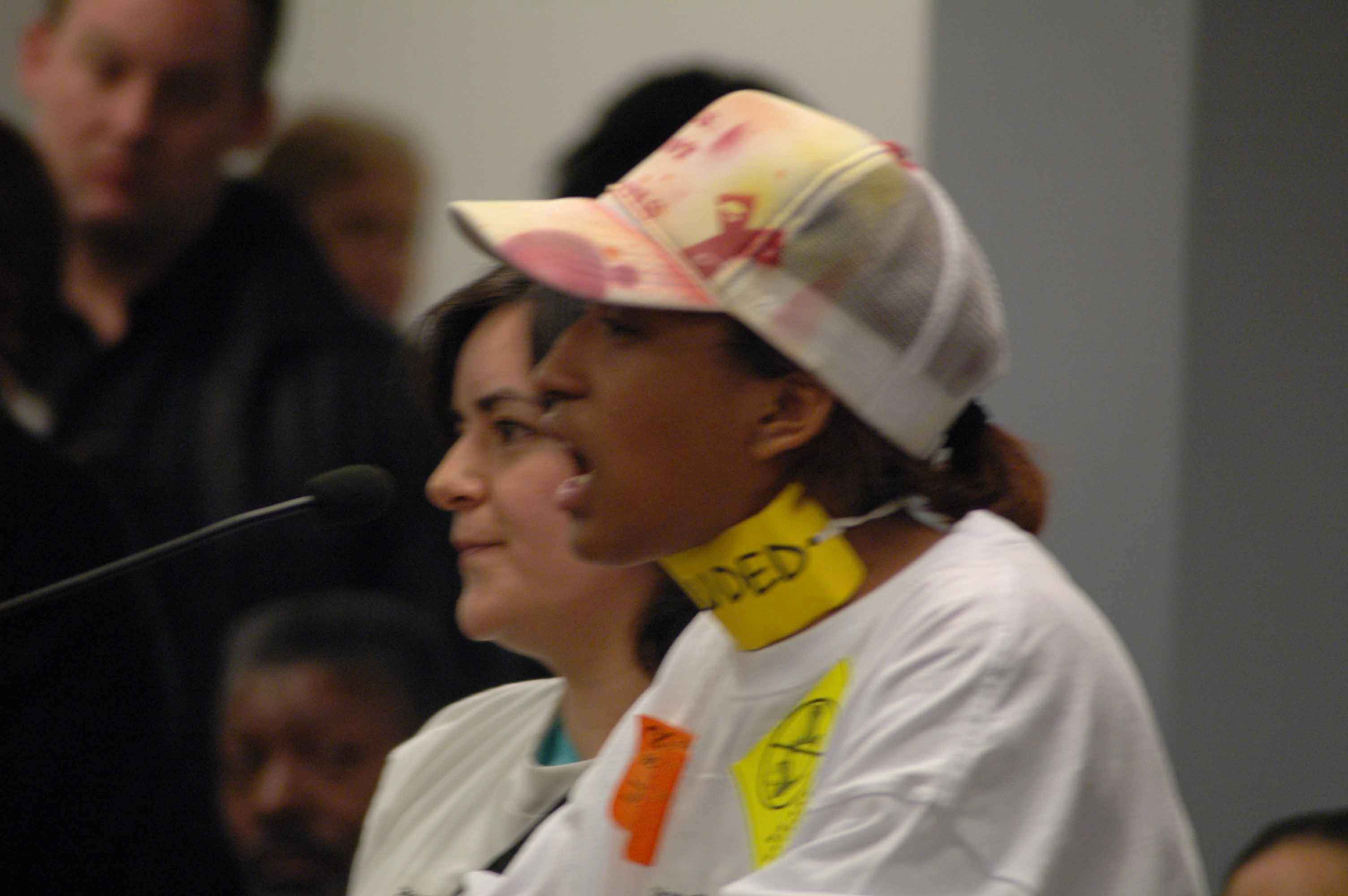 February 27, 2008. While CTU officers, including Ted Dallas, were being warned that they would be disciplined for being “insubordinate” if they opposed the reconstitutions of Harper and Orr high schools (and Copernicus, Fulton, Howe, and Morton elementary schools), students, teachers, parents, and community organizers were mobilizing against the attacks on their schools. Above, militant protesters opposing the reconstitution of Orr spoke forcefully both outside 125 S. Clark St. and at the Board meeting on February 27, finally prompting Rufus Williams to order CPS security to remove some of them from the Board chambers. Meanwhile, Marilyn Stewart (see memo below) was warning the union’s officers — in a fashion like Karl Rove in the Bush White House — the stay away from the protests so the union could create a unified message and avoid “different messages given by various individuals at various times...” (see Stewart’s February 1 memo to the officers, below. Substance photo by George N. Schmidt.
February 27, 2008. While CTU officers, including Ted Dallas, were being warned that they would be disciplined for being “insubordinate” if they opposed the reconstitutions of Harper and Orr high schools (and Copernicus, Fulton, Howe, and Morton elementary schools), students, teachers, parents, and community organizers were mobilizing against the attacks on their schools. Above, militant protesters opposing the reconstitution of Orr spoke forcefully both outside 125 S. Clark St. and at the Board meeting on February 27, finally prompting Rufus Williams to order CPS security to remove some of them from the Board chambers. Meanwhile, Marilyn Stewart (see memo below) was warning the union’s officers — in a fashion like Karl Rove in the Bush White House — the stay away from the protests so the union could create a unified message and avoid “different messages given by various individuals at various times...” (see Stewart’s February 1 memo to the officers, below. Substance photo by George N. Schmidt.
Without more context and the answers to a lot more questions than either Marc Wigler or Marilyn Stewart are currently willing to address, the members of the Chicago Teachers Union (and the leaders of the American Federation of Teachers who are apparently siding with Stewart and Wigler against Dallas and Porter) have to ask themselves who is currently living up to both the letter and spirit of both the laws of the Chicago Teachers Union and the 70-year traditions of that union.
The confrontation between Ted Dallas and Marilyn Stewart is not a personal question of “issues” in some New Age sense, nor is it about the nit picking minutae of procedural particulars.
At issue since this sage began unfolding last summer, when Marilyn Stewart, fresh from her election to a second term as President of the Chicago Teachers Union, took over negotiations with the lawyers representing the Chicago Board of Education, is the essence of what the Chicago Teachers Union will be over the next 70 years.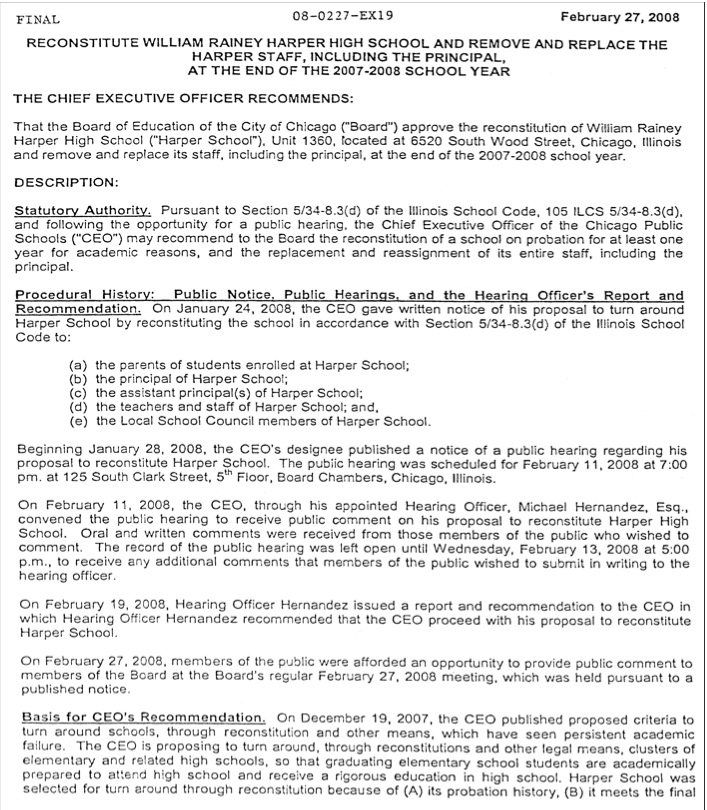 February 27, 2008. Once Marilyn Stewart’s contract ha d given the green light for Arne Duncan to close, privatize, or reorganize as many schools as he wanted to, “Turnaround” was on the agenda. Above: The Board Report approved on February 27, 2008 stating that the staff of Harper High School would be “removed and replaced” at the end of the 2007-2008 school year. Similar Board Reports were approved that day for Orr High School and for Copernicus, Fulton, Howe and Morton elementary schools. As noted above, Marilyn Stewart barred the union officers from holding meetings with the teachers at the schools under attack and accused Ted Dallas of undermining the “union” when he tried to meet with the teachers who were facing the end of their careers thanks to the Stewart contract.
February 27, 2008. Once Marilyn Stewart’s contract ha d given the green light for Arne Duncan to close, privatize, or reorganize as many schools as he wanted to, “Turnaround” was on the agenda. Above: The Board Report approved on February 27, 2008 stating that the staff of Harper High School would be “removed and replaced” at the end of the 2007-2008 school year. Similar Board Reports were approved that day for Orr High School and for Copernicus, Fulton, Howe and Morton elementary schools. As noted above, Marilyn Stewart barred the union officers from holding meetings with the teachers at the schools under attack and accused Ted Dallas of undermining the “union” when he tried to meet with the teachers who were facing the end of their careers thanks to the Stewart contract.
And as members of the Chicago Teachers Union study the documents that are dribbling out of the offices of the Chicago Teachers Union in the course of the dispute must ask: Who is representing the members? Who is representing what unions exist for?
For all the overwhelming technical details of the Koffman - Walsh Complaint (and all the documents leaked by Marilyn Stewart to Koffman and Walsh after Stewart has refused to provide that same information to the union’s delegates and members), a close reading of the materials being used to “indict” the Vice President of the Chicago Teachers Union in May 2008 may actually result in the finger of guilt turning on the current accusers.
When the history of the past year or two inside the Chicago Teachers Union is finally written, will the leaders of other unions be able to stand proudly and proclaim that they backed Marilyn Stewart — a union President who hired a scab and then tried to cover up that hiring — or her critics?

